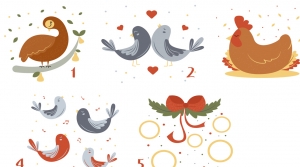Can You Be More Specific?
“Capitalize on the post-holiday rush by driving incremental purchases amongst shoppers redeeming gift cards, taking advantage of longer sales windows or making returns,” the 2024 Digital Marketing Playbook advises. Just two weeks ago, at the Business Spotlight, I recall one of the presenters doing precisely that kind of “capitalizing” on post-holiday needs. When it was Troy Larson’s turn to give a 60-second “pitch” for his Alder Avenue Home Handyman business, he offered to help all of us not-so-handy parents assemble all those Christmas gifts.
“When a business understands their customers’ needs, they can tailor their products and marketing plan to better serve those needs, momencrm.com explains naming five main needs: 1. price points 2.convenience 3.sustainability 4.transparency 5.control/options. However, successful marketing messages are delivered “across channels when and where each person is most receptive”, epsilon.com emphasizes.
Researching and understanding your target market is one of the ABCs of all content marketing. Read, read, read, is my best advice as a content marketer, from local business publications to your competitors’ marketing materials – it all helps you hone your own message, we teach at Say It For You.
Using blog posts and newsletter issues to highlight specific services and product uses is a way to achieve razor-sharp appeal to prospects with an urgent, precise need. Interviewed for the article “Tips From the Inside” in Inc. Magazine, the purchasing agents of mega corporation Northrup Grumman answered: “Be as specific as possible when describing what you can do for us.”
In Digital Marketing for Dummies, the authors stress that content marketing works only to the extent it is specific; the more specific you are in describing the shortcuts and solutions, the more engaging that content will be. What we have learned over the years at Say It For You is that the benefit of describing specific solutions holds true even if that solution is not one that fits precisely into the searcher’s inquiry – the general impression readers get is that they’ve come to a place where problems get solved!
Assembling the bicycle your daughter received for Christmas is only one of hundreds of different tasks that Alder Avenue handymen perform. But the secret of the “pow” in Troy Larson’s 60-second marketing “pitch” was that it was so very specific.






Follow us online!